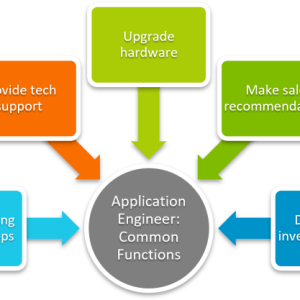What is a Jet Engine Car?
A jet engine car is a vehicle powered by a jet engine, typically designed for land speed records or exhibition purposes. These cars are incredibly fast. They are also very loud;
The use of a jet engine allows for immense thrust. This thrust propels the car to extreme speeds. It’s a fascinating application of aerospace technology on the ground.
The Science Behind the Speed
Jet engines work by taking in air, compressing it, mixing it with fuel, and igniting the mixture. The resulting hot gas is expelled at high speed. This creates thrust.
Newton’s third law of motion is key here: for every action, there is an equal and opposite reaction. The expelled gas pushes the car forward.
Key Components:
- Air Intake: Channels air into the engine.
- Compressor: Increases the pressure of the air.
- Combustion Chamber: Where fuel is mixed and burned.
- Turbine: Extracts energy from the hot gas to power the compressor.
- Nozzle: Directs the exhaust gas to generate thrust.
Famous Jet Engine Cars
Several jet engine cars have achieved legendary status in the world of land speed records. These vehicles represent the pinnacle of engineering and daring.
One notable example is ThrustSSC, which broke the sound barrier on land in 1997. It reached a speed of over 763 mph (1,228 km/h).
FAQ: Frequently Asked Questions
Building My Own (Mini) Jet Engine Car
Okay, so maybe “car” is a strong word. I didn’t exactly build a land speed record contender. But I did manage to cobble together a small, radio-controlled car powered by a model jet engine. It was a project born out of sheer curiosity and a healthy dose of “I wonder if I can?”.
The biggest challenge was sourcing a suitable engine. I ended up with a small turbine engine designed for model aircraft. It wasn’t cheap, but the sound alone was worth the investment. The whine as it spooled up was intoxicating!
The Assembly Process:
- Chassis Modification: I reinforced the chassis of a standard RC car to handle the engine’s weight and vibrations. Lots of metal bracing was involved.
- Fuel System Integration: This was tricky. I had to create a small, reliable fuel tank and delivery system. I used a miniature fuel pump and carefully routed the fuel lines.
- Engine Mounting: I fabricated a custom engine mount to securely attach the turbine to the chassis. Alignment was crucial to prevent the car from veering off course.
- Remote Control Integration: I modified the RC receiver to control the engine’s throttle. This allowed me to adjust the engine speed remotely.
The first test run was… eventful. The car shot forward with surprising force, kicking up dust and gravel. It was much faster than I anticipated! I quickly learned that precise throttle control was essential. A little too much power and the car would spin out. Too little, and it would barely move.
After several adjustments and a few near misses, I managed to get the car running smoothly. It wasn’t breaking any speed records, but it was exhilarating to watch it zip around. The sound of the turbine engine was truly something else. It was a miniature jet engine car, and I built it!
The Future of Jet Engine Vehicles (My Speculation)
While full-scale jet engine cars might remain niche vehicles for record attempts, I believe elements of jet engine technology could find their way into future transportation systems. Think about it: the efficiency and power-to-weight ratio of jet engines are undeniable.
Perhaps we’ll see hybrid systems that combine jet turbines with electric motors. This could provide a boost of power for acceleration or emergency situations. Or maybe we’ll see advancements in materials science that allow us to build smaller, more efficient jet engines for personal vehicles.
Of course, there are significant challenges to overcome. Noise pollution, fuel consumption, and safety concerns are all major hurdles. But I’m optimistic that with continued research and development, we can harness the power of jet engines in a more sustainable and practical way.
My little RC car project gave me a glimpse into the potential of this technology. It was a reminder that even the most ambitious dreams can start with a simple idea and a willingness to experiment. And who knows, maybe one day I’ll build a full-scale jet engine car. But for now, I’m happy with my miniature version.
My First (and Last?) Attempt at a Jet-Powered Skateboard
After the relative success of the RC car, I got a little… ambitious. I thought, “If I can power a car with a miniature jet engine, why not a skateboard?” It seemed like a brilliant idea at the time. In hindsight, it was probably one of my less well-thought-out projects.
I managed to acquire a slightly larger turbine engine, still designed for model aircraft, but with significantly more thrust. I envisioned myself gliding effortlessly down the street, propelled by a roaring jet engine. The reality was far less glamorous.
The Design Flaws:
- Stability Issues: Attaching a jet engine to a skateboard significantly altered the center of gravity. It was incredibly difficult to balance.
- Heat Management: The exhaust was directed downwards, which quickly became a problem. The heat melted the asphalt and scorched my shoes.
- Control Problems: Steering was nearly impossible. The thrust was so powerful that it overwhelmed my ability to control the board.
- Safety Concerns: Let’s just say I invested heavily in knee pads and elbow guards.
The first test run was a disaster. I strapped myself onto the board, fired up the engine, and immediately lost control. The board lurched forward, spun wildly, and ejected me onto the pavement. I ended up with a few scrapes and bruises, and a newfound respect for the laws of physics.
I tried several modifications to improve the design. I added fins for stability, heat shields to protect the asphalt, and even attempted to create a rudimentary steering system. But nothing seemed to work. The jet-powered skateboard remained an unmanageable, dangerous contraption.
Eventually, I decided to abandon the project. It was simply too risky and impractical. I learned a valuable lesson: not every idea is a good idea, and some things are best left to the realm of fantasy. I sold the engine (at a significant loss) and went back to more sensible hobbies, like building miniature robots.
Lessons Learned: From RC Cars to (Failed) Skateboards
My foray into the world of jet engines, while sometimes disastrous, taught me a lot about engineering, problem-solving, and the importance of safety. I learned that even the most ambitious projects can be broken down into smaller, manageable steps. I also learned that failure is an inevitable part of the learning process.
The RC car project taught me about the fundamentals of jet engine operation, fuel systems, and remote control integration. The skateboard project, on the other hand, taught me about the importance of stability, heat management, and the limitations of my own abilities.
I’m still fascinated by jet engine technology, and I’m always looking for new ways to explore its potential. But I’ve learned to be more cautious and realistic in my approach. I’m currently working on a project to build a small, jet-powered drone. It’s a much safer and more practical application of the technology, and I’m excited to see where it leads.
My name is Alex, and I’m an amateur engineer. I love to build things, and I’m always looking for new challenges. I hope my experiences, both successes and failures, can inspire others to pursue their own creative endeavors. Just remember to wear your safety goggles!




